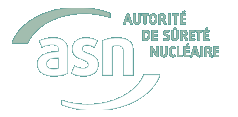| Chapter 01 |
- KNOWLEDGE OF THE HAZARDS AND
RISKS FROM IONISING RADIATION
- Biological and health effects
- Evaluation of risks linked to ionising radiation
- Scientific uncertainty and vigilance
- Radio-sensitivity
- Effects of low doses
- NUCLEAR ACTIVITIES
- Basic nuclear installations
- Definition
- Accident prevention and nuclear safety
- Transport of radioactive and fissile material for civil use
- Small-scale nuclear activities
- Disposal of radioactive waste
- Management of contaminated sites
- Industrial activities enhancing natural ionising radiation
- MONITORING OF EXPOSURE TO IONISING RADIATION
- Exposures of the population to natural ionising radiation sources
- Radiations of natural origin (excluding radon)
- Exposure to radon
- External exposure due to cosmic radiation
- Doses received by workers
- Exposure of nuclear workers
- Worker exposure to TENORM
- Flight crew exposure to cosmic radiation
- Doses received by the population as a result of nuclear activities
- Doses received by patients
- Protection of non-human species
- OUTLOOK
|
|
ASN remains particularly attentive to the correct functioning
of the occupational exposure monitoring system set up by
IRSN (SISERI), in that the statistics provided constitute
valuable national indicators of trends in occupational exposure
and are useful in assessing the effectiveness of the measures
taken by the licensees to implement the optimisation
principle. As in the preceding years, the IRSN-published
study of worker exposure in 2010 confirms the stabilisation
at a low level of the number of monitored workers whose
annual dose exceeded 20 mSv, and the stabilisation at a low
level of the collective dose following the reduction that began
in 1996. From 2012, owing to the probable reduction in the
regulatory exposure dose limit for the lens of the eye, particular
attention will need to be given to monitoring this specific
exposure in health professionals associated with interventional
practices.
The second national action plan for radon-related risks,
published in November 2011, highlights the need to develop
screening of radon exposure in dwellings. For ASN, the
expected publication of new regulations on this subject
should be an opportunity to compile all radon exposure
data in a single national system comprising the results of
measurements taken in premises open to the public, the
workplace and dwellings.
ASN also remains attentive to the information produced by
the national observatory of patient exposure, run by InVS
and IRSN, whose first publication (April 2010) confirmed
that, as in the other developed countries, the doses delivered
to patients during diagnostic examinations was on the rise in
France. Improvements of the precision of this monitoring
system, involving the stakeholders, would however appear to
be necessary.
The question of hypersensitivity to ionising radiation still
requires particular attention in terms of applied research at both
national and international level, with a view to rapidly devising
a radiosensitivity test for patients, especially prior to radiotherapy
treatment. In the field of low doses, this question must
also continue to be examined, especially owing to the largescale
use of breast cancer screening using mammography.
Finally, ASN has decided in 2012 to implement pluralistic and
effective monitoring of the actions initiated at the national level
in response to the 2011 recommendations concerning the link
between child leukaemia and environmental factors.
|




